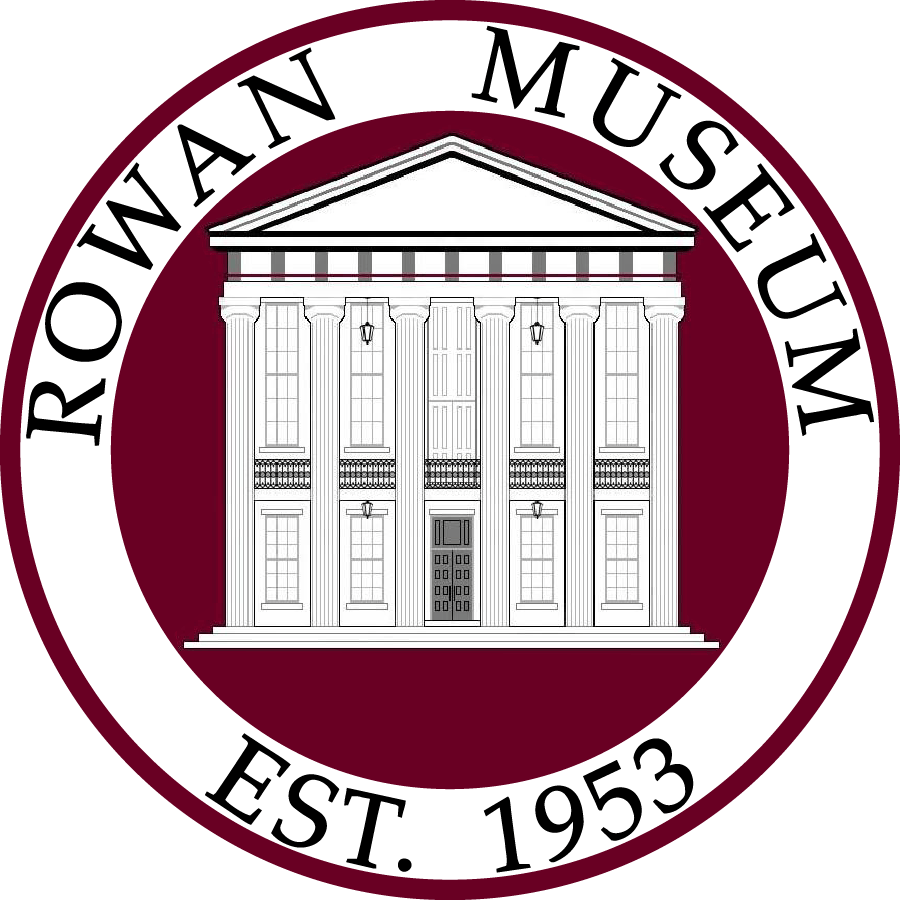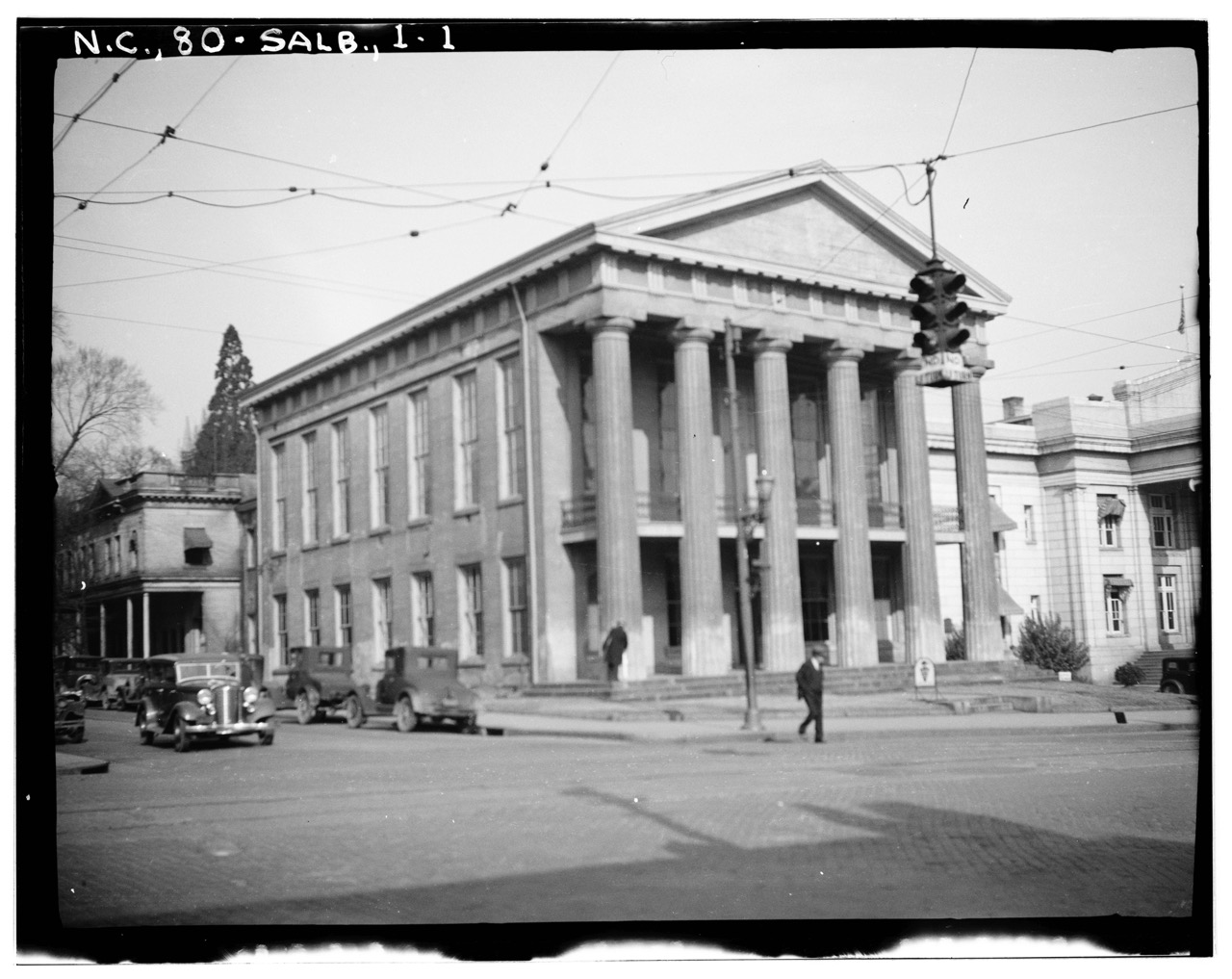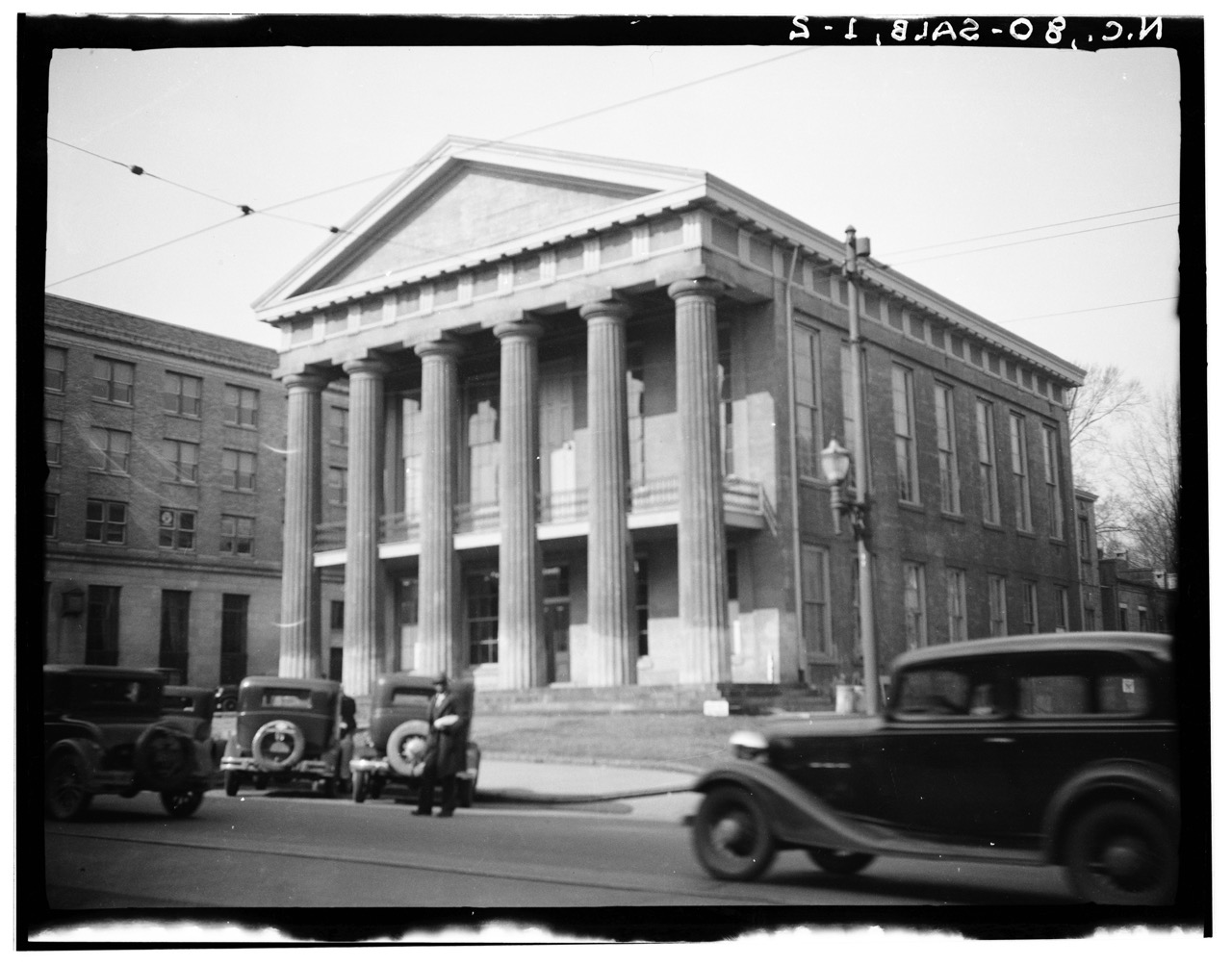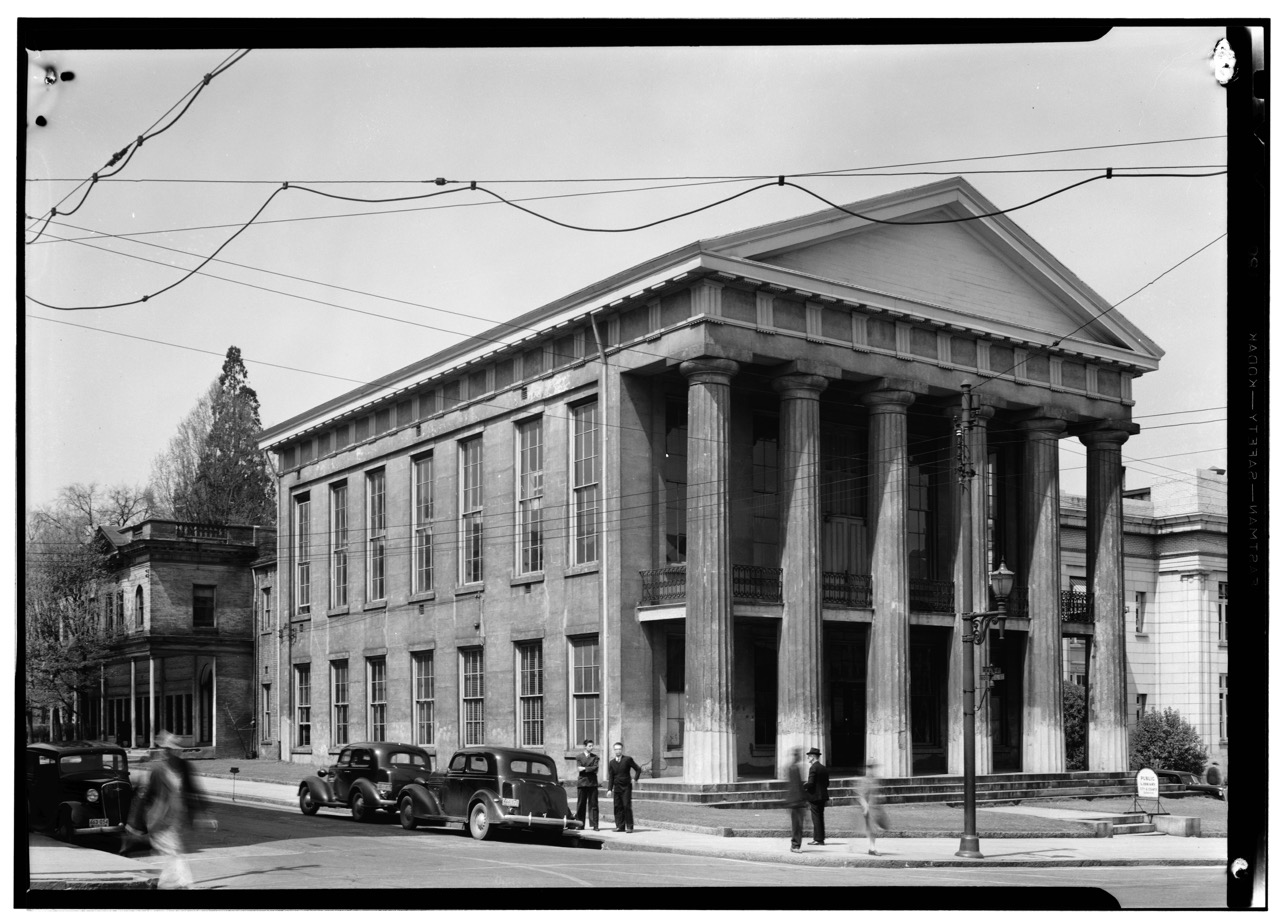Plan your visit
From I-85 take Exit 76 (NC Highway 52 South Salisbury). Head towards Salisbury Downtown on Innes Street. Turn onto North Main Street and the museum is located on the corner of Council Street. Street parking available on Council and Main Streets.
Pictured: The 1857 courthouse. Curtesy of The Library of Congress, Historic American Buildings Survey, Frederick D. Nichols, Photographer April, 1940
The Community Building, originally built as the Rowan County Courthouse, is a historic building located at Salisbury, Rowan County, North Carolina.
It was built between 1854 and 1857, and is a two-story, Classical Revival, stuccoed brick building on a granite foundation. It measures 50 feet wide and 85 feet long and features a pedimented portico supported by six Doric order columns. This was the third courthouse structure built by county commissioners.
Pictures: Curtesy of The Library of Congress, Historic American Buildings Survey, Frederick D. Nichols, Photographer April, 1940.
Soon after Rowan County was established in 1753, Salisbury was designated as the fourth site in the colony where the "General Gaol Delivery" or Supreme Court was to sit. For this essential role in the colony the newly established town sought to erect a building at the intersection of Main and Innes Streets that was of frame work, weather-boarded, and a story and a half high. This structure was completed in 1756. The High Court heard cases in Salisbury for Western North Carolina and was presided over by attorneys for the King as Edmund Fanning, John Frohock, and Abner Nash, a later governor of North Carolina. Daniel Boone appeared in this court as a defendant in several minor cases. William R Davie, founder of the University of North Carolina, practiced here, and Andrew Jackson received his license to practice law in the courthouse in 1787.
In 1771, the Colonial Assembly ordered a new courthouse to be erected due to the "ruinous condition" of the original structure. A board of commissioners was appointed in 1781, but it was not until 1800 that the second structure was finally completed to replace the original.
Fifty years after the erection of the second courthouse the county commissioners in the May term of the 1854 session made inquiries into the necessity for building a third, more modern and commodious courthouse. In August of the same year D. A. Davis, John I. Shaver, Paul O. Sifford, David Barringer, and O. G. Foard, members of the committee, ordered that the county undertake the construction of a new courthouse on the grounds where the Jail and Clerks offices were situated. In October, advertisements were printed seeking bids for materials for a building 50 feet wide, 85 feet long including the portico with a foundation of granite. The specifications called for walls of brick and a roof of tin.
Messers. Conrad and Williams were the contractors, and in praise of the builders the editor of the local newspaper stated that they were "erecting a magnificent structure which when completed will be another monument--of their artistic, skill and ingenuity as builders."
By the end of 1855 the new courthouse was roofed and nearly ready for occupancy. So impressed were Rowan's neighbors that Guilford County asked the committee to furnish information to design their new temple of justice.
The new Rowan courthouse was formally dedicated early in 1857) and the editor of the Carolina Watchman called for the installation of the old town clock given to Salisbury by General John Steele when he was controller of the U S Treasury. The town clock occupied the belfry until after the Civil War when in 1866 a bell was presented to the town and hung in place of the clock Reputable lawyers and statesmen of the day appeared before the bar of the new courthouse.
Judge John Ellis, soon to become Governor of North Carolina, was the first superior court judge to preside in the new building.
Burton Craige, lawyer and congressman, who later introduced the Ordinance of Secession that took North Carolina out of the Union practiced in the building as did Judge David F Caldwell, William C. Love, and Nathaniel Boyden, North Carolina Congressman and Supreme Court Justice. In 1912 agitation to construct a new court center due to the extremely poor acoustics in the 1855-1857 courthouse was inaugurated in the county. “It is extremely painful to listen to a speaker in that room" wrote the editor of the Carolina Watchman, "and almost impossible to understand him.” In 1914 a new courthouse was dedicated to replace the 1855-1857 one. And, in July of the same year the county board influenced by a committee of prominent citizens elected to use the Classical Revival Courthouse as a Community Center.
The building was repaired and used as a headquarters for several county-wide organizations, and in addition, since 1914, the offices of Rowan County have gradually moved back into the structure for lack of office space in the courthouse structure completed in 1914.
Thomas Waterman has called the third Rowan Courthouse a work of "real monumental quality--quiet and dignified," and “an interesting attempt to use the classic orders to give monumental quality without impractically heavy shafts.” The structure is considered by architectural historians to be a prize landmark of the classical revival in Western North Carolina.



